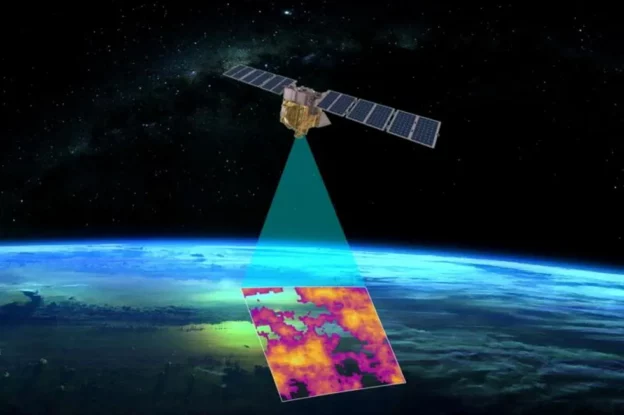The successful launch of the MethaneSAT satellite MethaneSAT satellite, an initiative of BAE Systems marks a significant advance in the detection and management of global methane emissions. The main objective of this project is to encourage producers to implement rapid corrective measures for methane leaks at production sites, thus contributing to the reduction of greenhouse gases.

The launch of the MethaneSAT satellite
BAE Systems, a leading UK aerospace and defense contractor, has been responsible for sending this 350 kg satellite into space. The liftoff took place from the Vandenberg Space Force Base in California, aboard a Falcon 9 rocket of the U.S. company SpaceX The launch underscored international collaboration in the fight against climate change.
The MethaneSAT satellite promises to significantly improve the accuracy of methane leak detection, overcoming the limitations of previous satellites by providing high-resolution data. This development will allow for clearer interpretation and early detection of emissions, thus facilitating informed decision making for mitigation.
Importantly, the data collected by MethaneSAT will be distributed free of charge to the public through a cloud platform developed in partnership with Google. This gesture underscores the commitment of BAE Systems and its employees to global environmental well-being.
To date, the Tropomi multispectral imaging spectrometer onboard the European Space Agency’s Copernicus Sentinel-5P satellite has been the primary instrument for daily global mapping of methane concentrations. MethaneSAT is positioned to complement these existing capabilities, offering accurate mapping of emissions over a wide field of view and the ability to monitor the same sites on a daily basis in most cases.
Methane emissions from the oil and gas sector
MethaneSAT’s focus on emissions from the oil and gas sector, responsible for approximately 40% of all anthropogenic methane emissions, underscores the importance of this project in addressing a major source of this potent greenhouse gas.
The launch of MethaneSAT comes at a crucial time, following the incident of one of the largest methane leaks detected last year in Kazakhstan. methane leaks detected last year in Kazakhstan, highlighting the urgent need for advanced technologies for environmental monitoring. The launch of MethaneSAT comes at a crucial time, following an incident involving a major methane leak detected last year in Kazakhstan, highlighting the urgent need for advanced technologies for environmental monitoring.
Driving climate action with advanced technology
The deployment of the MethaneSAT satellite by BAE Systems represents a milestone in the use of advanced technology to combat climate change. By providing accurate and accessible data on methane emissions, this project not only improves leakage response capability, but also fosters greater global climate awareness and action, demonstrating the vital role of innovation in protecting the environment.
Don’t miss any of our posts and follow us on social media!
Inspenet.com YouTube LinkedIn Facebook Instagram
Source: upstreamonline.com
Photos: upstreamonline.com | BAE

